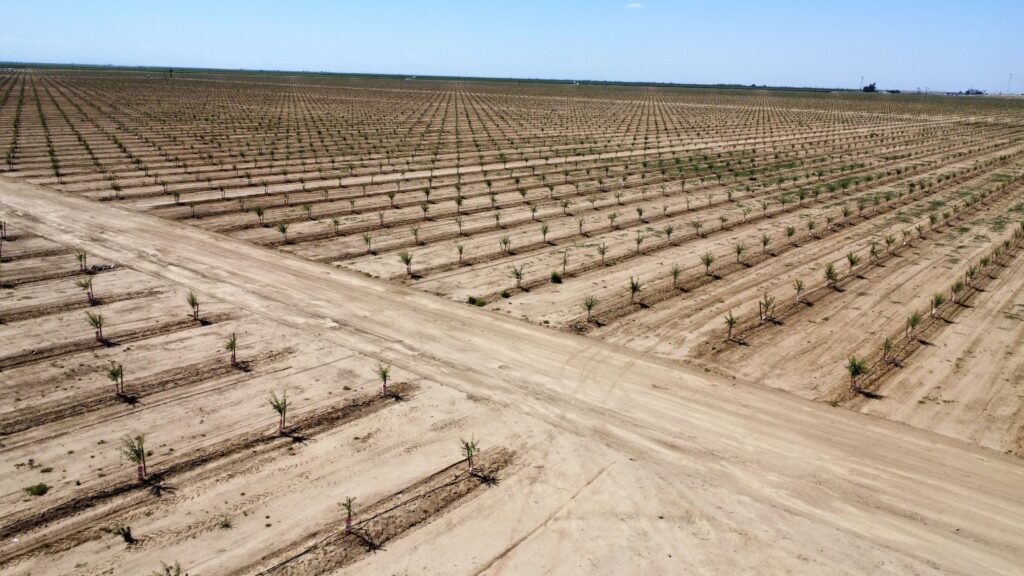More state money is flowing to the valley to take land out of production in an attempt to ease demand on groundwater.
The state Department of Water Resources (DWR) is starting a new program called LandFlex which will pay up to $25 million in incentives to farmers to fallow crops.
On February 23, DWR announced three grants from the program, all of which are going to San Joaquin Valley groundwater agencies.
Madera County groundwater sustainability agency (GSA) will receive $9.3 million, Greater Kaweah GSA will receive $7 million and Eastern Tule GSA will receive $7 million.
GSAs are in charge of bringing groundwater to sustainable levels by 2040 in accordance with the state’s Sustainable Groundwater Management Act.
The LandFlex program’s main goal is to protect at-risk domestic wells potentially impacted by surrounding agricultural pumping.
Farmers in the San Joaquin Valley have relied more heavily on groundwater as surface water supplies from the Sacramento-San Joaquin Delta have dwindled for environmental needs and after multiple years of prolonged drought. As a result, aquifer levels plummeted causing shallow drinking water wells to go dry throughout the San Joaquin Valley. In 2022 alone, more than 1,000 wells went dry in the valley.
The state money is for fallowing this year, said Stephanie Anagnoson, director of water and natural resources for Madera County.
“It’s a little late for that,” Anagnoson said, referring to the fact that many farmers have made their annual planting decisions and investments already. “But it might be enough to convince people,” said Anagnoson.
She said her agency is creating a process for growers to submit proposals as soon as possible. Then the GSA will probably contract with an outside economist to rank the proposals so funding can begin.
“We never anticipate getting any awards,” said Anagnoson. “It is always a surprise.”
But even with funding in hand, there are still unknowns about the program.
“I don’t really know much more than what was in the guidelines at this point,” said Mark Larsen, general manager of the Greater Kaweah GSA. “We’re still trying to figure out all the pieces of that and how it’s going to be applied, a little concerned that we make sure that the landowners that are interested in the program know exactly what is provided.”
There are several incentive categories under LandFlex depending on how much water is saved by fallowing land.
Guidelines for the program state it will pay $450 for every acre foot of water kept in the ground through water year 2023.
Most subbasins with pumping limits already in place are ramping their allocations down over time. That means farmers are still overdrafting a certain amount. For those overdrafted amounts, the LandFlex program will pay $750 per acre foot that stays in the ground.
The program will also pay an acreage fee to help transition fallowed land to less water intensive uses. Amounts vary based on crop:
- $250 per acre for row crops
- $2,000 per acre for dairy feed crops
- $2,800 per acre for orchards and vineyards
The state’s other land fallowing program, the Multibenefit Land Repurposing Program, has proved very popular, receiving far more applications than its $90 million in funding could sustain.
So far, that program has doled out grants of $10 million each to different agencies, including Madera County and Kaweah Delta Water Conservation District. The state Department of Conservation began the process for round two of funding for the program on February 1.
The different pools of funding will provide landowners with a variety of options for dealing with a lack of groundwater, said Larsen.
“It’s always a surprise to get that actual award and I think it’s a win for the landowners in this area,” said Larsen. “The state is offering to help out and I think that makes a big difference.”
Share this:
- Click to share on Facebook (Opens in new window)
- Click to share on Twitter (Opens in new window)
- Click to share on LinkedIn (Opens in new window)
- Click to share on Reddit (Opens in new window)
- Click to share on Tumblr (Opens in new window)
- Click to share on Pinterest (Opens in new window)
- Click to share on Pocket (Opens in new window)
- Click to share on Telegram (Opens in new window)
- Click to share on WhatsApp (Opens in new window)
- Click to print (Opens in new window)








